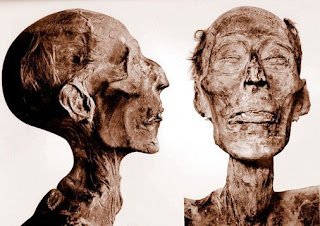
Horemheb was the first post-Amarna king to be considered legitimate in the 19th dynasty, which looked to him as the founder of an epoch.
The reigns of the Amarna pharaohs were eventually to be subsumed into his own, leaving no official record of what posterity deemed to be an unorthodox and distasteful interlude. Having no son, he selected his general and vizier, Ramses, to succeed him.
Ramses I and Seti I
Ramses I (ruled 1292–90 BCE) hailed from the eastern Nile River delta, and with the 19th dynasty, there was a political shift into the delta.
Ramses I was succeeded by his son and coregent, Seti I, who buried his father and provided him with mortuary buildings at Thebes and Abydos.
Seti I (ruled 1290–79 BCE) was a successful military leader who reasserted authority over Egypt’s weakened empire in the Middle East.
The Mitanni state had been dismembered, and the Hittites had become the dominant Asian power. Before tackling them, Seti laid the groundwork for military operations in Syria by fighting farther south against nomads and Palestinian city-states; then, following the strategy of Thutmose III, he secured the coastal cities and gained Kadesh. Although his engagement with the Hittites was successful, Egypt acquired only temporary control of part of the north Syrian plain.
A treaty was concluded with the Hittites, who, however, subsequently pushed farther southward and regained Kadesh by the time of Ramses II.
Seti I ended a new threat to Egyptian security when he defeated Libyans attempting to enter the delta. He also mounted a southern campaign, probably to the Fifth Cataract region.
Seti I’s reign looked its model to the mid-18th dynasty and was a time of considerable prosperity.
Seti I restored countless monuments that had been defaced in the Amarna period, and the refined decoration of his monuments, particularly his temple at Abydos, shows a classicizing tendency.
He also commissioned striking and novel reliefs showing stages of his campaigns, which are preserved notably on the north wall of the great hypostyle hall at Karnak.
This diversity of artistic approach is characteristic of the Ramesside period, which was culturally and ethnically pluralistic.
The Ramesside period of the New Kingdom in ancient Egypt